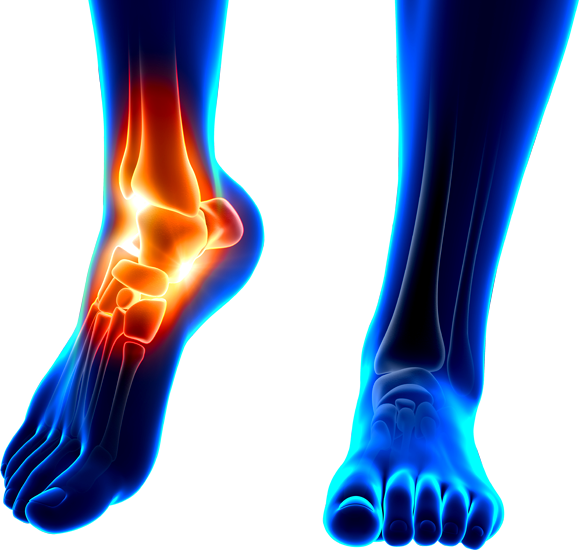Leeds Foot & Ankle Clinic
Experts in foot and ankle surgery

Ankle Ligament Reconstruction - The Arthroscopic (key-hole) Broström Procedure.
What is Chronic Ankle Instability?
Chronic ankle instability is a condition characterised by repeated ankle sprains, instability, and persistent discomfort in the ankle joint. This commonly results from a history of one or more ankle “sprain” injuries, causing ligament tears or stretches, which can weaken the ankle's stability.
What is The Arthroscopic Broström Procedure?
The Broström procedure is a surgical technique aimed at stabilising the ankle by repairing or reconstructing the damaged ligaments. This procedure can usually be performed using key hole (arthroscopic) techniques. This means it is carried out using tiny incisions to minimise soft tissue damage which can reduce swelling, pain and post operative ankle stiffness. During this procedure, your surgeon will:
- Incision: Make a number of small incisions around the ankle to access the damaged ligaments as well as fully assess the ankle joint for any other issues such as inflammation, scarring and loose or damaged cartilage.
- Ligament Repair: Repair the damaged ligaments and restore their tension and function in stabilising the ankle. In some cases, the surgeon may use some synthetic ligament material (called an internal brace) to further enhance stability.
- Tightening: The repaired or reconstructed ligaments are tightened and secured to the fibula bone in the ankle to restore ankle stability.
- Closure: The incision is closed with stitches, and a sterile dressing is applied.
- Immobilisation: The ankle is protected after the surgery in a removable walking boot for a period of approximately 4 weeks.
What are the benefits of the Broström procedure?
- Improved Ankle Stability: The primary goal of the procedure is to restore stability to the ankle, reducing the risk of recurrent sprains.
- Pain Relief: By stabilising the ankle, pain and discomfort associated with chronic instability are often alleviated.
- Enhanced Function: Many patients experience improved function and the ability to return to regular activities including sports after recovery.
What will my recovery and rehabilitation be like?
Following the Broström procedure, recovery and rehabilitation are critical for a successful outcome:
- Postoperative Care: It is important to rest and elevate the foot and ankle for the first few weeks after your surgery. This will reduce swelling and pain. Keep the bandages and dressings dry until you come for your follow up appointment. You can usually remove the boot at rest and at night once you feel comfortable to do so, usually around 3-5 days after the procedure.
- Ligament Repair: Repair the damaged ligaments and restore their tension and function in stabilising the ankle. In some cases, the surgeon may use some synthetic ligament material (called an internal brace) to further enhance stability.
- Pain killers: You will be provided with pain relief and it is important to take those regularly for the first few days. You can then reduce them as you feel your pain improves which may be after a few days or sometimes a little longer.
- Immobilisation: You may need to use crutches and wear a boot initially to protect the ankle. You can weight bear as soon as you feel comfortable to do so in the boot. The boot is used for 4 weeks in most cases, and then replaced with a
- Physiotherapy: Physiotherapy will help to restore strength, flexibility, and function to the ankle. We usually commence this from 4 weeks post-surgery.
- Follow-Up Appointments: Attend all scheduled follow-up appointments to monitor your progress, remove stitches or staples, and assess your healing.
What are the potential risks and complications?
As with any surgery, the Broström procedure carries some risks and potential complications. These may include:
- Infection
- Nerve damage
- Continued or recurrent instability
- Stiffness in the ankle or other joints in the foot
- Pain
- Blood clots (DVT / PE)